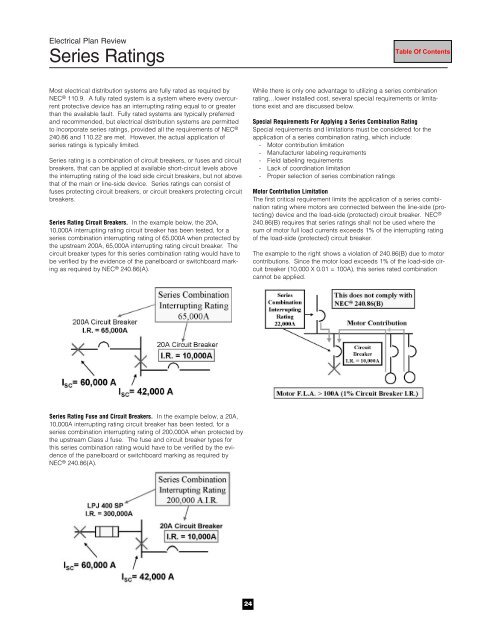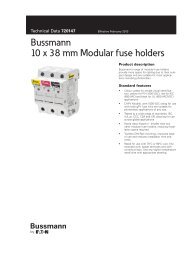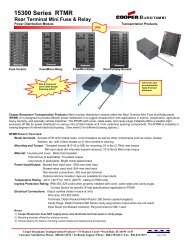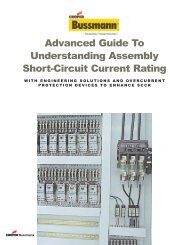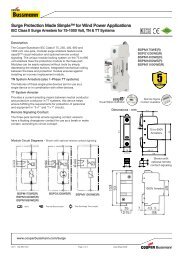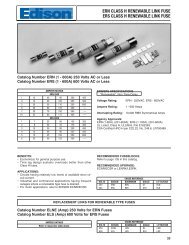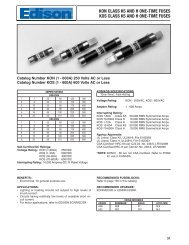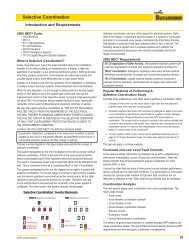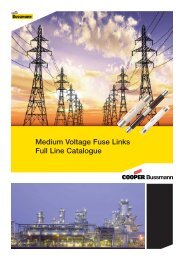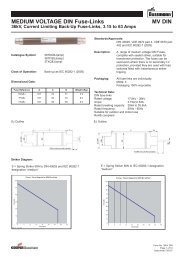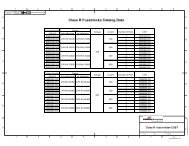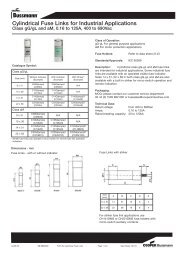Overcurrent Protection and Devices, Short-Circuit Calculations ...
Overcurrent Protection and Devices, Short-Circuit Calculations ...
Overcurrent Protection and Devices, Short-Circuit Calculations ...
You also want an ePaper? Increase the reach of your titles
YUMPU automatically turns print PDFs into web optimized ePapers that Google loves.
Electrical Plan Review<br />
Series Ratings<br />
Most electrical distribution systems are fully rated as required by<br />
NEC ® 110.9. A fully rated system is a system where every overcurrent<br />
protective device has an interrupting rating equal to or greater<br />
than the available fault. Fully rated systems are typically preferred<br />
<strong>and</strong> recommended, but electrical distribution systems are permitted<br />
to incorporate series ratings, provided all the requirements of NEC ®<br />
240.86 <strong>and</strong> 110.22 are met. However, the actual application of<br />
series ratings is typically limited.<br />
Series rating is a combination of circuit breakers, or fuses <strong>and</strong> circuit<br />
breakers, that can be applied at available short-circuit levels above<br />
the interrupting rating of the load side circuit breakers, but not above<br />
that of the main or line-side device. Series ratings can consist of<br />
fuses protecting circuit breakers, or circuit breakers protecting circuit<br />
breakers.<br />
Series Rating <strong>Circuit</strong> Breakers. In the example below, the 20A,<br />
10,000A interrupting rating circuit breaker has been tested, for a<br />
series combination interrupting rating of 65,000A when protected by<br />
the upstream 200A, 65,000A interrupting rating circuit breaker. The<br />
circuit breaker types for this series combination rating would have to<br />
be verified by the evidence of the panelboard or switchboard marking<br />
as required by NEC ® 240.86(A).<br />
While there is only one advantage to utilizing a series combination<br />
rating…lower installed cost, several special requirements or limitations<br />
exist <strong>and</strong> are discussed below.<br />
Special Requirements For Applying a Series Combination Rating<br />
Special requirements <strong>and</strong> limitations must be considered for the<br />
application of a series combination rating, which include:<br />
- Motor contribution limitation<br />
- Manufacturer labeling requirements<br />
- Field labeling requirements<br />
- Lack of coordination limitation<br />
- Proper selection of series combination ratings<br />
Motor Contribution Limitation<br />
The first critical requirement limits the application of a series combination<br />
rating where motors are connected between the line-side (protecting)<br />
device <strong>and</strong> the load-side (protected) circuit breaker. NEC ®<br />
240.86(B) requires that series ratings shall not be used where the<br />
sum of motor full load currents exceeds 1% of the interrupting rating<br />
of the load-side (protected) circuit breaker.<br />
The example to the right shows a violation of 240.86(B) due to motor<br />
contributions. Since the motor load exceeds 1% of the load-side circuit<br />
breaker (10,000 X 0.01 = 100A), this series rated combination<br />
cannot be applied.<br />
Series Rating Fuse <strong>and</strong> <strong>Circuit</strong> Breakers. In the example below, a 20A,<br />
10,000A interrupting rating circuit breaker has been tested, for a<br />
series combination interrupting rating of 200,000A when protected by<br />
the upstream Class J fuse. The fuse <strong>and</strong> circuit breaker types for<br />
this series combination rating would have to be verified by the evidence<br />
of the panelboard or switchboard marking as required by<br />
NEC ® 240.86(A).<br />
24


